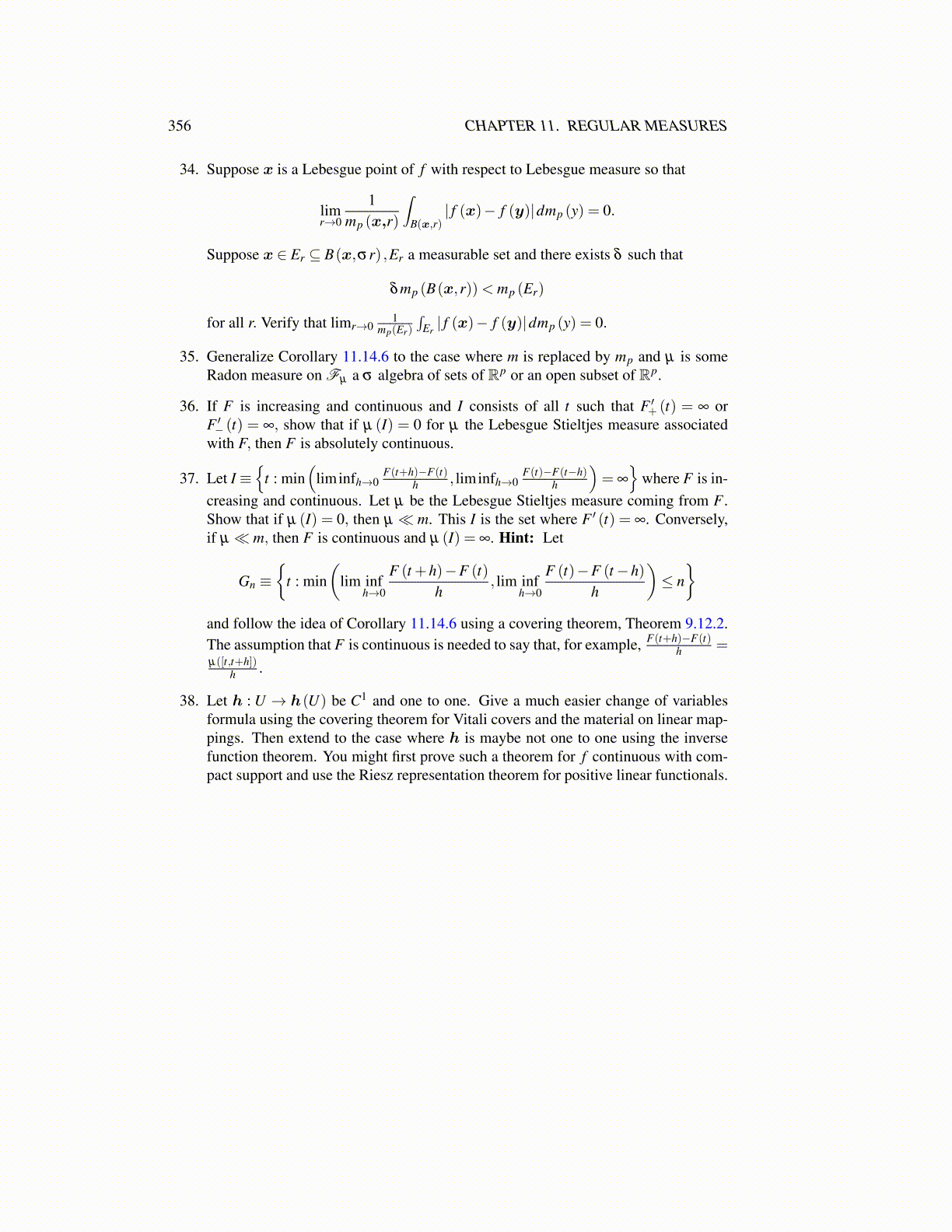
356 CHAPTER 11. REGULAR MEASURES
34. Suppose x is a Lebesgue point of f with respect to Lebesgue measure so that
limr→0
1mp (x,r)
∫B(x,r)
| f (x)− f (y)|dmp (y) = 0.
Suppose x ∈ Er ⊆ B(x,σr) ,Er a measurable set and there exists δ such that
δmp (B(x,r))< mp (Er)
for all r. Verify that limr→01
mp(Er)
∫Er| f (x)− f (y)|dmp (y) = 0.
35. Generalize Corollary 11.14.6 to the case where m is replaced by mp and µ is someRadon measure on Fµ a σ algebra of sets of Rp or an open subset of Rp.
36. If F is increasing and continuous and I consists of all t such that F ′+ (t) = ∞ orF ′− (t) = ∞, show that if µ (I) = 0 for µ the Lebesgue Stieltjes measure associatedwith F, then F is absolutely continuous.
37. Let I ≡{
t : min(
liminfh→0F(t+h)−F(t)
h , liminfh→0F(t)−F(t−h)
h
)= ∞
}where F is in-
creasing and continuous. Let µ be the Lebesgue Stieltjes measure coming from F .Show that if µ (I) = 0, then µ ≪ m. This I is the set where F ′ (t) = ∞. Conversely,if µ ≪ m, then F is continuous and µ (I) = ∞. Hint: Let
Gn ≡{
t : min(
lim infh→0
F (t +h)−F (t)h
, lim infh→0
F (t)−F (t−h)h
)≤ n}
and follow the idea of Corollary 11.14.6 using a covering theorem, Theorem 9.12.2.The assumption that F is continuous is needed to say that, for example, F(t+h)−F(t)
h =µ([t,t+h])
h .
38. Let h : U → h(U) be C1 and one to one. Give a much easier change of variablesformula using the covering theorem for Vitali covers and the material on linear map-pings. Then extend to the case where h is maybe not one to one using the inversefunction theorem. You might first prove such a theorem for f continuous with com-pact support and use the Riesz representation theorem for positive linear functionals.